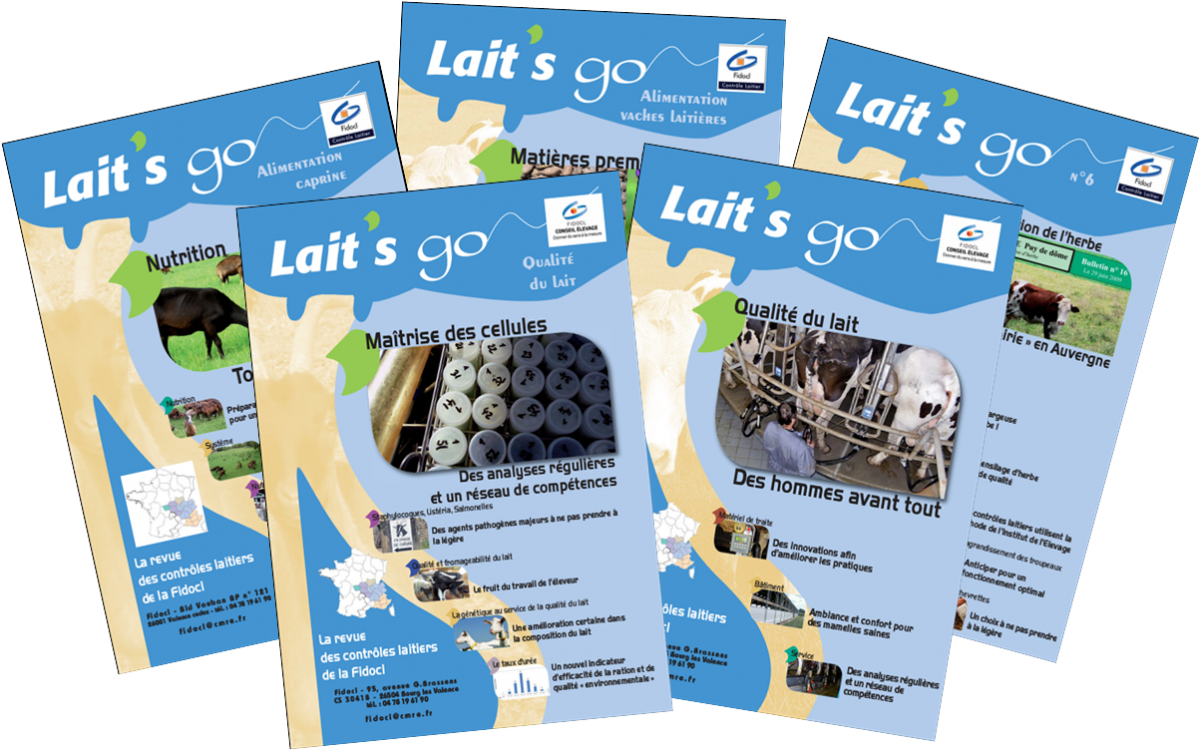Agrégateur de flux
Age at first calving (AFC) is a key determinant of lifetime productivity and profitability in dairy herds, yet its long-term effects in dairy buffaloes remain poorly documented. This study evaluated the influence of AFC on milk yield and composition, reproductive performance, and economic outcomes in Italian Mediterranean buffaloes reared under commercial conditions. Data included 576,028 test-day records from 27,744 buffaloes across 110 herds, collected over a 10-year period (2013–2023). Animals were grouped into 8 AFC classes and stratified by parity order: primiparous, mid-parity (second–third parities), and greater parity (≥4).
Pharmacokinetics and tolerability of liposomal synthetic cannabidiol subcutaneous depot in Holstein dairy calves
As animal welfare concerns and pain management awareness in cattle increase, long-term analgesics can become a solution for the treatment of painful husbandry procedures. Cannabidiol (CBD) has anti-inflammatory and analgesic properties. Nevertheless, poor gastrointestinal absorption and first-pass liver metabolism results in low oral bioavailability in humans. The use of injected liposomal-CBD facilitates slow-drug-release, providing prolonged CBD plasma concentrations, with increased bioavailability.
Performance and health status of preweaning dairy calves fed milk replacer supplemented with increasing doses of ethyl esters of polyunsaturated fatty acids of linseed oil
This study aimed to determine the effect of supplementing milk replacer (MR) with increasing doses of a mixture of ethyl esters of polyunsaturated fatty acid of linseed oil (EEPUFALO; α-linolenic acid 55.5%, linoleic acid 13.3%, and oleic acid 18.0%) on growth performance, health, immune status, and oxidative stress parameters of preweaning dairy calves. A total of 54 Holstein–Friesian calves (5 d of age, 39.8 ± 0.69 kg, both males and females) were divided into 3 groups, each consisting of 18 animals: a control group and 2 treatment groups (D1 and D2), receiving 0, 15, and 30 mL/d of EEPUFALO incorporated into the MR, respectively.
Study of changes in unripened soft rennet-curd cheeses caused by the addition of dried nettle leaves: Physicochemical properties, microbial quality, polyphenol content, and sensory characteristics
The objectives of the study were to investigate changes in the number of selected groups of microorganisms and the level of antioxidant activity during storage of model unripened cheeses with the addition of dried nettle leaves, to compare their sensory characteristics, as well as to determine the antioxidant properties of the obtained whey. Three groups of model unripened rennet-curd cheeses were produced: I—a control sample without a plant additive, II and III—samples with the addition of dried nettle leaves in the amount of 0.165% and 0.330% (g/100 g of milk), respectively.
Impact of tannin-based additives on animal performance and enteric methane emissions in dairy and beef cattle: A meta-analysis
This meta-analysis evaluated the effects of tannin-based feed additives on enteric methane (CH4) emissions, nutrient digestibility, and animal performance in beef and dairy cattle. A total of 23 peer-reviewed studies comprising 75 treatment means were included in the analysis. Random effects and mixed effects models were used to estimate relative mean differences and identify moderators of response. Robust variance estimation accounted for within-study dependence. Overall, tannin supplementation significantly reduced enteric CH4 emissions (−10.2%) and CH4 yield (−9.3%) across studies in beef and dairy cattle.
Comparative analysis of red deer milk proteins throughout lactation using quantitative proteomics
Red deer milk is known for its high nutritional quality, containing elevated levels of protein, fat, and essential minerals compared with other ruminant milks. This study investigates the protein profile of red deer milk across various lactation stages, using advanced liquid chromatography-MS/MS techniques to enhance understanding of its nutritional composition. In this study, milk samples were collected from 120 lactating does at 8 distinct points during the lactation period, ensuring consistent dietary conditions.
Resveratrol ameliorates early-weaning stressed calves via alterations in gut microbiome and metabolome
Early weaning disrupts gut microbiota homeostasis and increases oxidative stress and inflammation in calves, thus negatively affecting their growth performance and health. Resveratrol is a polyphenol with antioxidant and anti-inflammatory properties that modulates gut microbiota and metabolites. In the present study, we investigated the effects of resveratrol on growth performance, immune function, antioxidant capacity, gut microbiota, and metabolic pathways in early-weaning calves. Thirty-six newborn Simmental × Holstein F1 generation female calves were randomly assigned to one of 3 treatment groups: conventional weaning at 63 d of age (CON), early weaning at 49 d of age (EW), or early weaning at 49 d of age with 2 g/d resveratrol supplementation from d 7 to d 49 (EWR).
Assessment of physicochemical, microbiological and quality characteristics of raw standardized milk in northern part of India
The focus of study was to investigate physicochemical, microbiological, and quality characteristics of raw standardized milk collected from different northern parts of India. Results showed that physicochemical test values for pH, acidity, moisture, fat, SNF, total soluble solids, protein were varied from 6.62 to 6.66, 0.133% to 0.121%, 84.17% to 86.01%, 5.09% to 6.59%, 8.47% to 9.23%, 13.56% to 15.82%, 36.45% to 36.78%, and 0.61% to 0.73%, respectively. These results were in accordance with Codex International Standard and the Food Safety and Standards Authority of India.
Negatively controlled trial investigating the effect of dry cow therapy in first-lactation dairy cows on the prevalence of intramammary infections in the subsequent lactation
Research has shown that selective dry cow therapy (DCT) can be implemented in well-managed dairy farms without negatively affecting postpartum udder health and performance. This raises the question of whether DCT is necessary in well-managed farms. Our primary objective was to assess the impact of withholding DCT from cows at the end of their first lactation on postpartum quarter-level intramammary infection (IMI) prevalence. Our secondary objectives were to evaluate the impact of DCT omission on postpartum quarter-level IMI prevalence in subgroups of quarters, stratified by quarter-level somatic cell count (SCC) and California mastitis test (CMT) results at dry-off, and to use those findings to predict the effect of SCC- and CMT-guided selective DCT programs on antibiotic use and udder health.
Methane and carbon dioxide production from dairy bulls selected for divergent enteric methane emissions per unit of feed eaten and that from their daughters
Enteric methane emissions can be measured on male and female cattle, unlike traditional dairy production phenotypes where a sire's breeding value is estimated from the performance of his female relatives. It is, however, important to validate that young dairy sires are a good model for female dairy animals, by confirming that phenotypic differences in CH4 emissions in bulls are observed in their daughters. Methane emissions and DMI were measured in a population of young dairy bulls (n = 486) in an indoor feeding trial for 5 wk.
Transcriptomic analysis reveals metabolic changes in the liver, subcutaneous adipose, and mammary gland tissues during the process of conjugated linoleic acid–induced milk fat depression in dairy cows
Conjugated linoleic acid, a long-chain fatty acid, reduces milk fat content in dairy cows, which may alleviate the negative energy balance during the early lactation period by reducing lactation energy output and thereby decreasing the occurrence of ketosis and fatty liver due to a negative energy balance. Although research has revealed the milk fat inhibition mechanism, the mechanisms underlying the metabolic interactions among the liver, subcutaneous fat, and mammary gland tissues during this period remain unclear.
A survey among students of veterinary medicine and agricultural sciences in Germany, Austria, and Switzerland about perception of digital technologies on dairy farms and students' preparedness for the digital transformation in dairy farming
Digital technologies and the internet determine our professional and private everyday life. This also applies to the dairy industry and veterinary practice. The objective of the presented study was to learn more about the perception of digital technologies by students of veterinary medicine (VetMed) and agricultural sciences (AgriSci) in Germany, Austria, and Switzerland. This next generation of farmers and veterinarians will have to deal with digital technologies in their later professional lives and they will have to face societal demands such as animal welfare and the reduced use of pharmaceuticals.
Genomic predictions of mastitis-related traits early in the first lactation of dairy heifers using a single-step genomic approach
The objective of this study was to assess the potential benefit of a single-step GBLUP (ssGBLUP) genomic prediction approach to subclinical mastitis (SCM) and SCS traits in the early first lactation of heifers. Subclinical mastitis is highly prevalent during early lactation and poses significant challenges to both animal welfare and farm profitability. Given the low h2 of SCM, ssGBLUP has emerged as an effective approach for the genomic prediction of such low-h2 traits. This approach combines phenotypic data and genomic and pedigree information simultaneously through a hybrid relationship matrix to predict GEBV.
Pregnancy induces extensive changes of transcript usage in the goat brain
Gestation induces strong anatomical, histological and transcriptomic changes in the pregnant female brain. Our study aimed to characterize the RNA transcripts expressed in the goat brain and their main structural, transcriptional, and functional features, while also exploring whether 2-mo (57 d) pregnancy affects transcript usage in the brain. Twelve brain tissue samples from three 2-mo pregnant and 4 nonpregnant Murciano-Granadina goats were sequenced. A total of 62,185 transcripts from 29,044 genes (averaging ∼2.14 transcripts per gene) were detected, and ∼60% of them were novel transcripts or novel loci.
Genomic assessment of reproduction traits in Holstein dairy cattle across 3 lactations using additive genetic models and post hoc random forest analysis
The typical objective of genomic analyses is to assess additive genetic variance in traits. However, the nonadditive component of genetic variation is often disregarded. Consequently, genomic analyses may not directly elucidate the complex genomic structures or other potential underlying mechanisms, such as pleiotropy, dominance, or epistatic effects. Furthermore, polygenic traits are likely to be subject to nonadditive interactions. Specifically regarding traits pertaining to fitness, including fertility, genomic regions exhibiting nonadditive genetic effects, potentially resulting from directional dominance or epistatic effects, have been identified and require further investigation.
Invited review: The impact of wildfires, air pollution, and air quality on the health and production of dairy cattle
The multitude of environmental factors that affect health and production of dairy cows have been documented extensively in the literature. However, the influence of wildfire smoke on dairy production has only been investigated in recent years. Wildfires are becoming a greater source of air pollution across the United States, leading to public health concerns. Given the prevalence of dairy operations residing in fire-prone regions, wildfires may have an under-recognized role in suboptimal dairy production.
Journal of Dairy Science® and JDS Communications® Editorial Board and Ad Hoc Reviewers, 2025
The American Dairy Science Association, the Journal of Dairy Science, and JDS Communications gratefully acknowledge the following individuals who served as members of the editorial boards and as ad hoc reviewers for the journals in 2025.
2025 ADSA Undergraduate Scholarship Recognition Awards
2025 Fellows of the American Dairy Science Association®
The 2025 elected fellows were recognized at the Awards Ceremony of the American Dairy Science Association on June 24, 2025.
2025 Awards Program of the American Dairy Science Association®
The annual Awards Program of the American Dairy Science Association was held on June 24, 2025. Graduate Student Division leaders Miranda Farricker and Mauricio Guerra read the citations. The association greatly appreciates the continued generosity and support of the donors in presenting the annual awards to ADSA® members.






